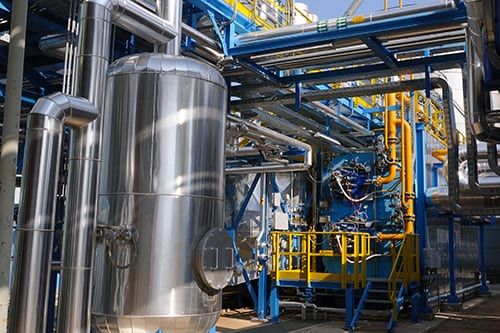During the heyday of large power plant construction over the past decade, the technology seemed wondrous, as just one decently-sized facility could produce enough electricity to power hundreds of thousands of homes.
However, net efficiencies from these plants were maximized in the mid-30% range for subcritical units, and no higher than the mid-40% level for advanced supercritical units. The primary factor in these low net efficiencies is that most of the latent heat transferred to water in the steam generator is lost during condensation of the turbine exhaust steam for condensate return to the boiler.
Now, as resource conservation and concerns regarding global climate change continue to grow, so does the development of co-generation and combined heat and power (CHP) facilities. Steam is often utilized for multiple purposes at these plants, including power production, energy for process heat exchangers, power to drive turbines that operate heavy machinery, and in the case of CHP, heat for central business districts in large cities and for hospitals, universities, and other institutions. A general outline of an industrial co-generation network is shown below.

Because the steam is primarily utilized for direct heating in most applications at these plants, the latent heat is recovered rather than wasted. Thus, overall net efficiencies at some facilities may reach 80%. This is a tremendous improvement over conventional power generation (albeit net efficiencies of modern combined cycle power plants now exceed 60%) and is why co-generation and CHP continue to increase in stature.
In addition to the steam generation system proper, these facilities often have miles of steam and condensate return piping, plus dozens or perhaps even hundreds of heat exchangers throughout the campus. The metallurgy of this equipment can be quite variable and may include carbon steel condensate piping and boiler components, copper-alloy or stainless-steel heat exchangers, and perhaps even exotic alloys for special heat exchange applications. The complexity of such systems creates many components susceptible to scaling and/or corrosion.
This is where water treatment service providers like ChemTreat can step in to help you maintain system reliability and performance. As these units are often an Achilles’ Heel at many plants, where, for example, hardness leakage from sodium softeners causes severe boiler scaling, expert opinions on makeup system performance and replacement can help address these issues.
Similar problems often occur from leaks in process heat exchangers that allow contaminants to infiltrate condensate return systems and, subsequently, the boilers and sometimes even the steam itself.
A wide range of treatment chemistries are available to help you mitigate boiler deposition and corrosion. Neutralizing and filming amines can help protect extensive steam and condensate return networks.
Please contact ChemTreat for assistance in designing a treatment program customized for your application. Like all other technologies, due diligence is necessary to determine the feasibility for utilizing methods. Always consult your equipment manuals and guides.

